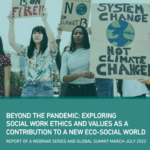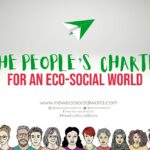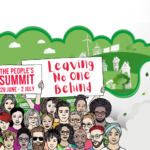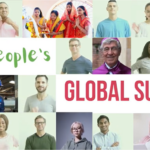Home › Forums › Live Open Mic Forum › Values for transitioning to an eco-social world › Reply To: Values for transitioning to an eco-social world
thank you, Jane. I am not familiar with SSM but now I want to. I did a brief look at the link. Reference to soft caught my eye immediately. My work at UCalgary and community service work in suicide prevention led to the university (finally) agreeing to invest in our “soft science” work in suicide prevention (non we call it suicide-safer living). The university helped us develop LivingWorkv Education, the first (or close to the first) social enterprise company in suicide intervention training. We chose to go this social purpose route because of the uncertainty of longterm commitment of gov’t support and taxpayer criticisms when they think their $$ are going to other people or regions. It was an experiment to see if we (when I say We, I refer to 4 start-up partners from social work, psychiatry, psychology) to see if we could successfully use a business model to sustain a social purpose mission initiative. Our bottom line was aimed at large-scale dissemination of suicide safer training. so far it has worked out fairly well. LivingWorks will celebrate its 40th anniversary in 2023. We have national offices in 3 countries (Canada, America, Australia) and a network of over 10,000 locally/community-based trainers in more than 30 countries. We have indigenized cultural context and language versions serving Inuit, Maori, Aborigine, Norwegian, Lithuanian, south Korean populations. The most recent is I-ASIST in Australia between Univ QLD, LW and participatory action input. One of the unexpected spin-offs of our early work (80s and 90s) was an invitation by the UN social policy division to organize, host, fundraise an interregional meeting of representatives from 12 countries (Canada, America, Australia, Finland, Netherlands, Nigeria, UAE, Japan, China, India, Estonia, Hungary) to draft a UN Guideline for the development and implementation of national suicide prevention strategies that was published in 1996 and guided several countries in the development of their suicide prevention strategies. The original UN request was based on the false notion that suicide was a mental health problem and looked after by WHO. They realized from a document we submitted in response to a meeting by Ministers of social Welfare on the future of developmental social welfare that suicide was an intersectoral problem, not only a mental health problem. We were asked to help correct the misconception. Our meeting in Calgary in 1993 was a bit like this important 4-day summit and its Charter process to have a working draft at the end. We had a 7-day meeting in Canada to draft and submit to the UN, Out of the rich diversity of the participants and diverse attitudes and beliefs about suicide, we meant the deadline.
I was intrigued with the SSM process and its close fit with David Bohm’s belief and practice in deep dialogue that allowed for solutions to arise out of the dialogue. I have been a follower of his work for many years and continue through an association with the Pari Center in Italy that is keeping the importance of his work alive and ongoing. Leroy Little Bear from the Blackfoot Nation in southern Alberta is an active participant with the Pari Centre and the work of understanding and respecting the convergence of 20th-century science (especially quantum developments) and indigenous science/knowledge. A recent article on this emerging convergence had a headline along the line of “Western science is finally starting to catch up with indigenous science and knowledge”.






